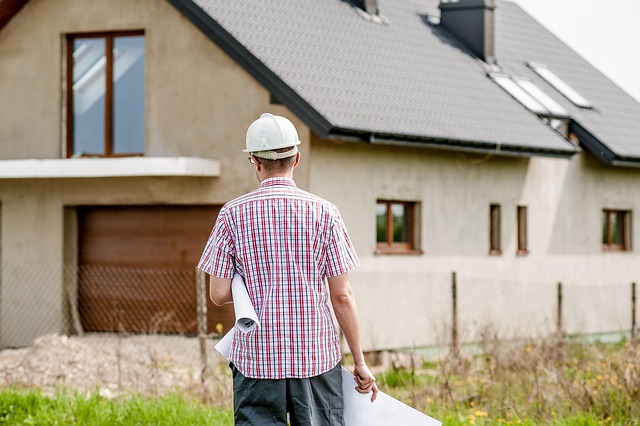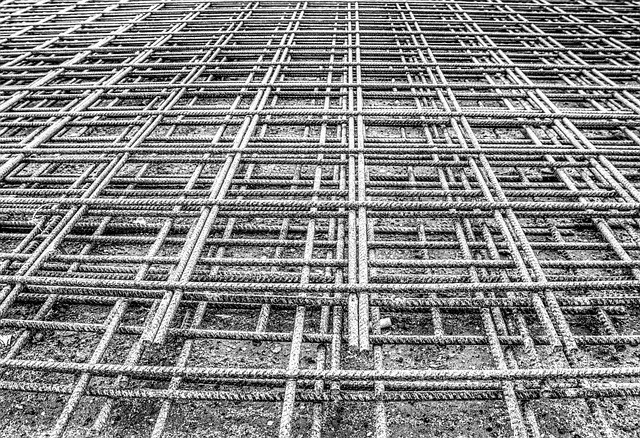Foundation contractors offer crucial basement stabilization services to mitigate structural issues like cracks, uneven floors, and settling, preserving homes' integrity, aesthetics, and comfort. They employ advanced techniques (piering, underpinning) and materials (hydraulic cement, carbon fiber sheets) for long-term stability, enhancing property value and transforming unstable basements into functional spaces. Regular upkeep, including leak repairs, proper drainage, humidity control, and debris-free gutters, is essential to prevent further complications and maximize the benefits of stabilization services.
Basement stabilization is a crucial service that addresses common issues like cracks, leaks, and uneven floors. This essential practice not only enhances the structural integrity of your home but also increases its value. Understanding when and why to engage foundation contractors is key. From assessing basement cracks to implementing advanced techniques like leveling and reinforcement, this article covers everything you need to know. Learn about the materials used, cost considerations, and success stories that highlight the transformative power of professional basement stabilization services, emphasizing the vital role foundation contractors play in creating stable, safe living spaces.
Understanding Basement Stabilization: Common Issues and Their Impact

Basement stabilization is a critical service provided by foundation contractors to address common issues that can significantly impact a home’s structure and value. Some of the most prevalent problems include cracks in concrete walls, uneven floors, and settling or shifting foundations. These issues often arise due to factors like poor initial construction, soil conditions, or changes in groundwater levels.
Cracking, for instance, not only compromises the aesthetic appeal but can also signal more severe structural damage. Uneven floors can make everyday activities uncomfortable and may indicate a serious foundation problem that requires immediate attention from foundation contractors. Left unaddressed, these issues can lead to further complications, such as door and window misalignment, water intrusion, and even structural collapse, necessitating costly repairs or even the need for basement renovation or replacement.
The Role of Foundation Contractors in Basement Stabilization

When it comes to basement stabilization, foundation contractors play a pivotal role in ensuring structural integrity and long-term stability. These experts are specifically trained to handle the unique challenges that basements present, such as moisture issues, settlement cracks, and uneven floors. They employ advanced techniques and materials to reinforce and stabilize the existing foundation, preventing further damage or movement.
Foundation contractors often use innovative methods like piering, underpinning, or wall anchors to strengthen the basement’s foundation. By addressing the root causes of instability, they not only enhance the structural integrity but also improve the overall value and functionality of the basement space. Their expertise is invaluable in creating a safe, dry, and livable area below grade, making them an essential part of any basement stabilization project.
Assessing Basement Cracks: Identifying Structural Problems

Basement cracks can be more than just cosmetic issues; they often indicate underlying structural problems that require professional attention. Foundation contractors are equipped to assess and diagnose these issues, ensuring a thorough understanding of the extent of damage. During an inspection, these experts will carefully examine the basement walls, floors, and ceilings for any signs of movement or instability.
Identifying specific types of cracks is crucial in determining the cause. For instance, diagonal cracks suggest potential settling or soil movement, while horizontal cracks may indicate excessive moisture buildup or structural weaknesses. Foundation contractors use their expertise to interpret these crack patterns, enabling them to recommend appropriate stabilization methods, such as piering, underpinning, or wall anchors, to secure and strengthen the basement foundation.
Advanced Techniques for Basement Leveling and Reinforcement

Basement stabilization services have evolved significantly, incorporating advanced techniques that go beyond traditional methods. Foundation contractors now employ sophisticated tools and materials to level and reinforce basements, addressing structural issues effectively. One such technique involves using high-performance polymers and resins to fill cracks and gaps in the concrete, enhancing overall stability.
Another innovative approach is the installation of steel beams and columns, strategically placed to redistribute weight and relieve stress on vulnerable areas. These advanced methods not only ensure a level basement but also strengthen it against future movements, offering long-term solutions for homeowners seeking to maximize their living space.
Materials Used in Basement Stabilization Projects

Basement stabilization projects often involve a variety of materials, chosen based on the specific needs and challenges of each structure. Foundation contractors commonly use products like structural foam, carbon fiber sheets, and hydraulic cement to reinforce and stabilize basement walls. Structural foam, for example, provides exceptional strength-to-weight ratio, making it ideal for raising settled or cracked foundations. Carbon fiber sheets are known for their high tensile strength and ability to resist water absorption, offering long-term stability against further damage. Hydraulic cement, a fast-setting material, fills cracks and gaps, effectively locking in moisture and preventing future shifting.
These materials work synergistically to create a robust, stable foundation for basements, addressing issues like settling, cracking, and water infiltration. Skilled foundation contractors select the appropriate mix of products, ensuring lasting results that protect homes from costly structural damage and provide homeowners with peace of mind.
Cost Considerations: Budgeting for Basement Stabilization Services

Basement stabilization services can vary greatly in cost, depending on several factors. One of the primary considerations is the extent of damage or instability present. Foundation contractors will assess your basement’s unique needs and provide a quote tailored to the specific work required. This may include structural repairs, crack repair, or even complete underpinning solutions.
It’s essential to remember that budgeting for basement stabilization is an investment in your home’s long-term value and safety. While costs can range widely, it’s recommended to allocate a substantial portion of your budget for this project, especially if you’re dealing with serious foundation issues. Foundation contractors often offer flexible payment options, ensuring that the financial burden is manageable throughout the stabilization process.
Success Stories: Transforming Unstable Basements into Safe Spaces

Many homeowners have benefited from basement stabilization services, transforming once unstable and unsafe spaces into functional areas. Foundation contractors play a pivotal role in this transformation, addressing various issues like settling, cracking, or uneven floors. By employing advanced techniques and materials, they ensure the long-term stability of basements, making them safe for living, storage, or even entertainment.
These success stories highlight the expertise and dedication of foundation contractors. They carefully assess the unique challenges of each basement, implementing solutions tailored to specific needs. Through their work, families can enjoy increased livable space, peace of mind, and a home that stands strong against time’s effects.
Maintenance Tips to Ensure Long-Lasting Basement Stability

Maintaining a stable basement is key to ensuring your home’s structural integrity and preventing costly repairs down the line. Regular upkeep can significantly extend the life of your basement and surrounding foundation. One of the primary causes of basement instability is water intrusion, so addressing leaks promptly and installing proper drainage systems is essential. Foundation contractors recommend inspecting for cracks in walls and floors, especially around windows and doors, as these are common entry points for moisture. Repairing or sealing these cracks can prevent water from seeping into the basement and causing damage over time.
Additionally, maintaining an adequate level of humidity in the basement is crucial. High moisture levels can lead to mold growth and attract pests, while too little humidity may cause materials to shrink or crack. Using dehumidifiers or implementing a whole-house humidification system can help regulate humidity levels, ensuring your basement remains stable and comfortable. Regularly cleaning and clearing debris from drainage channels and gutters will also prevent water buildup around your foundation, reducing the risk of erosion and settlement issues over time.
